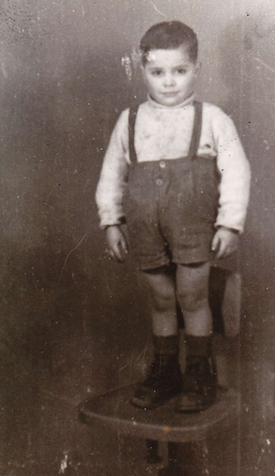About the Project
By publicizing these 1,100 photographs, the Museum hopes to identify these children, piece together information about their wartime and postwar experiences, and facilitate renewed connections among these young survivors, their families, and other individuals who were involved in their care during and after the war.
We hope to gather as much information as possible so that we can preserve the record of their experiences for future generations.
In order to do this, we need your help. If you recognize yourself or someone you know in one of the photos, please contact the Museum’s Holocaust Survivors and Victims Resource Center at or via phone at 202-488-0416.
Even if you don’t recognize anyone, please share these powerful photographs with your family and friends. Doing so will increase the chances of identifying these children and help raise awareness about the experiences of the most vulnerable victims of war and genocide.
Background
The persecution of Jews and others by the Nazis and their collaborators left millions of children displaced, orphaned, or otherwise separated from their families.
Agencies providing assistance to displaced persons after the war included the United Nations Relief and Rehabilitation Administration (UNRRA) and the International Refugee Organization (IRO), both operating under the auspices of the United Nations. Jewish organizations also participated, including the American Joint Distribution Committee (AJDC) and the World Jewish Congress (WJC).
These agencies helped displaced persons obtain housing, food, and medical care and establish new lives. In addition, they worked to reunite families separated during the war.
The photographs on this Web site were taken by relief workers during the immediate postwar period. Approximately 1,000 of them were taken at various locations and collected by the WJC.
The second set consists of more than 100 photos that were taken at Kloster Indersdorf, a children’s center established by UNRRA in Bavaria. In these photos, the children held placards with their names in the hopes that family members would be able to identify their missing loved ones.
Acknowledgments
The Museum wishes to thank The Jacob Rader Marcus Center of the American Jewish Archives and the Center for Holocaust Studies at the Museum of Jewish Heritage, A Living Memorial to the Holocaust for sharing their collections with us for this project. The Museum also wishes to thank the BBC Archive for permission to use their “captive children” recording on this website.
